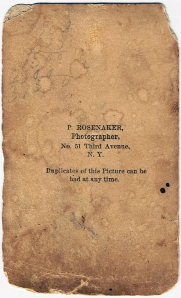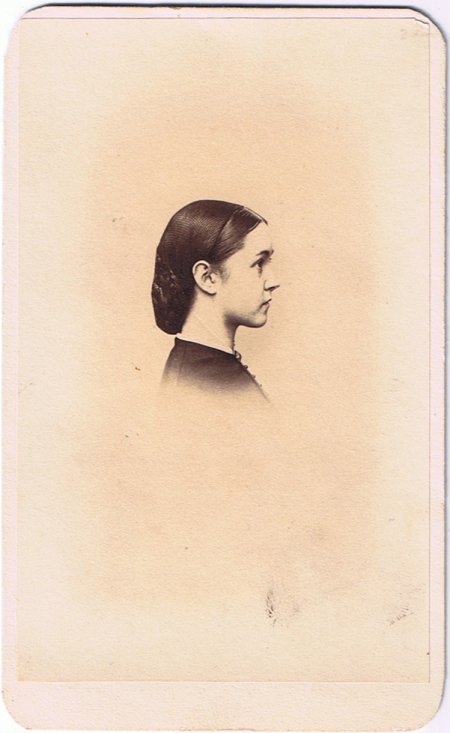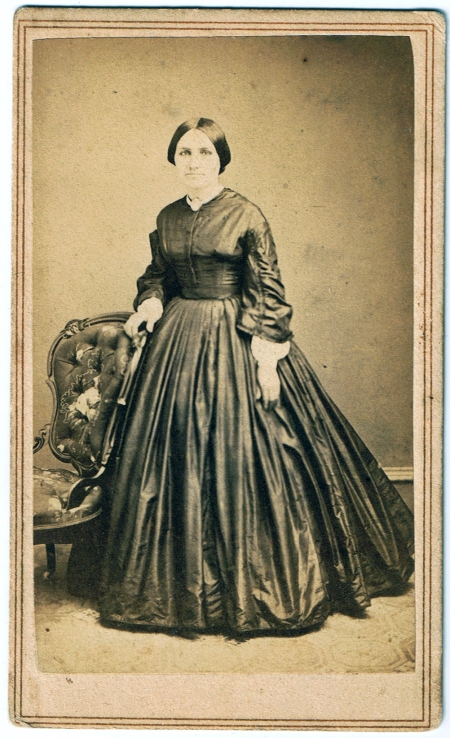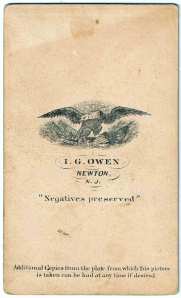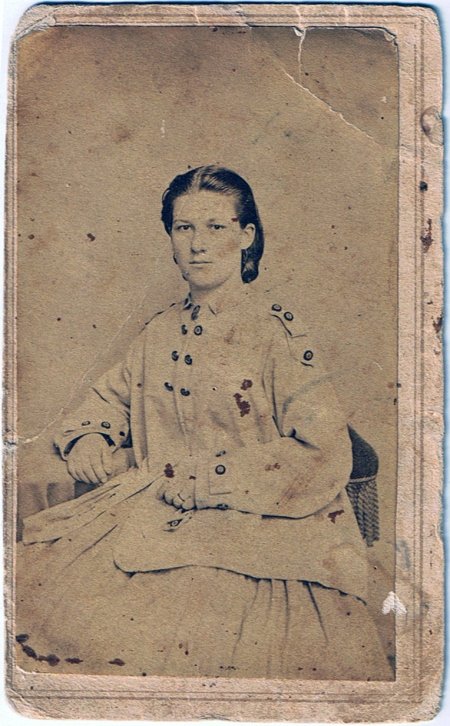
CDV: Young Woman in Coat with Buttons, c. 1864-66
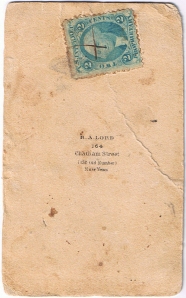
CDV: Young Woman in Coat with Buttons, backmark
Backmark: 2-cent Proprietary stamp, blue. ” R.A. Lord 164 Chatham Street (158 Old Number) New York” (more of those images here and here)
Date: c. 1864-1866
Subject: Seated Young Woman
Location: New York, NY
This young woman wears a paletot-style coat, probably of solid-colored wool. The coat has dropped armscyes, loose sleeves (in the style generally known as coat sleeves, i.e. two piece, shaped sleeves). The body of the coat is loose all over and, when standing, would provide a smooth line from her shoulders to the hem of her full skirt. This obscuring of the waistline was the most common silhouette for outerwear throughout the Victorian era.
The coat reaches about hip-level, and closes up center front with three sets of buttons. The buttons probably fasten with a cord loop. The coat has a narrow, rectangular collar and what appears to be a brooch pinned at the throat.
The coat is decorated with fabric tabs and buttons at the shoulder and cuff, giving it just a hint of the military style popular with women during the war years.
Her jewelry is a pair of hoop earrings and a ring on her finger. She is holding something in her hand, but I cannot make out what it is. A tiny miser’s purse, perhaps?
Hair: Her hair is typical of that worn by young women towards the end of the war. It is oiled (note the comb marks), center parted, and the front sections rolled away from the face. The roll begins right at her part, rather than down near her temples, which is a feature of late-war style. Her front rolled hair is combed back and down to meet her back hair, which is coiled into a low-lying bun or knot.

